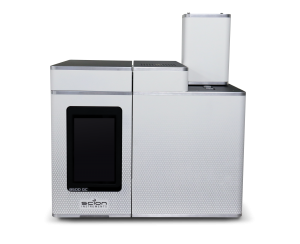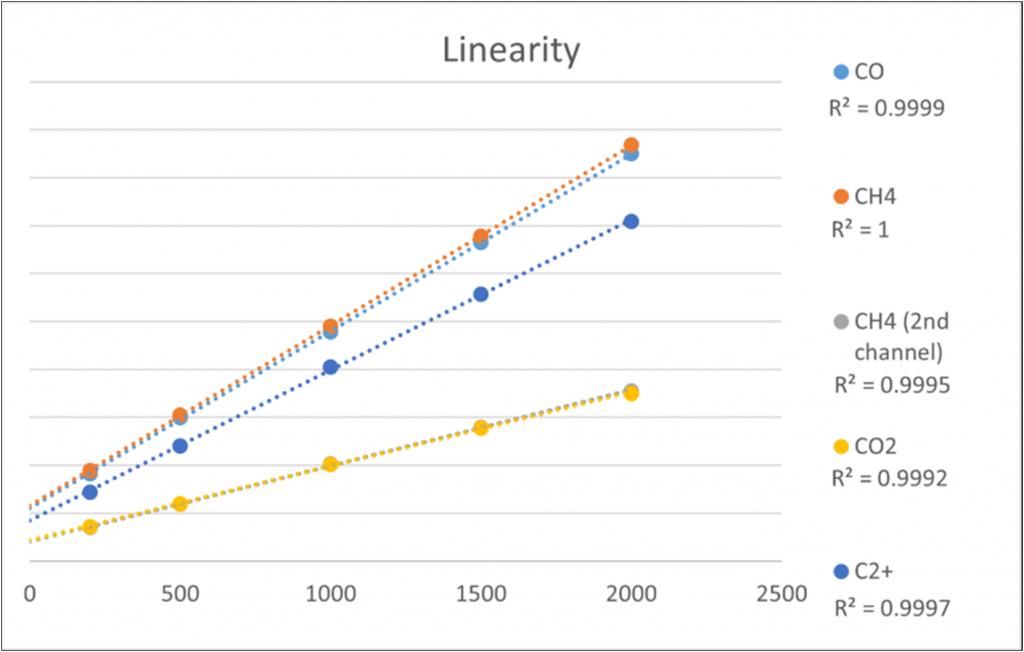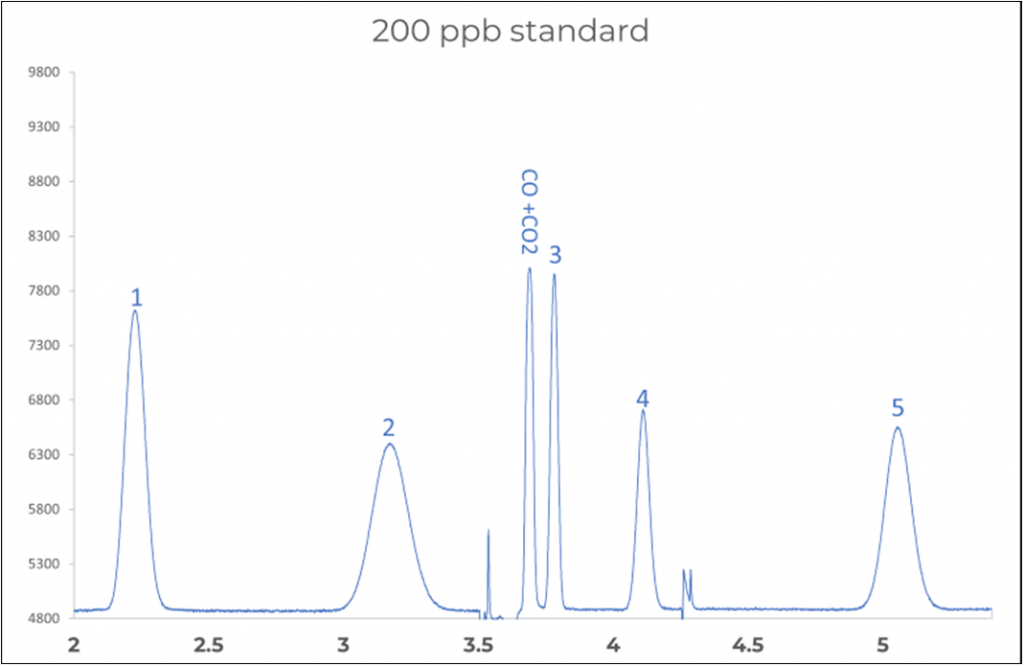ISO 14687: Low Level CO, CO2, CH4 and C2+ In Hydrogen Using FID
Introduction
Hydrogen is becoming more of a go to green solution for different applications, it can be produced by generators using renewable energy. Hydrogen supply infrastructures require specifications and operation protocols to maintain and monitor the quality of the hydrogen used.
This analyser is based on international standards NEN-ISO 21087 and ISO 14687 and is specially made for CO, CO2, CH4 and C2+ in hydrogen. This special analyser combines a super inert injector, multi column system, methanizer and FID with narrow bore ceramic jet so even 10 ppb of these components can be detected.
It is possible to configure this analyser for different matrices, for more information please contact our pre-sales experts for all the possibilities.
Figure 1 shows the SCION Instruments 8500 GC hydrogen analyser using a FID as detector. This application is also applicable on the SCION Instruments 456-GC.
Figure 1. The SCION Instruments 8500 GC Hydrogen analyser
Hardware
The SCION Instruments impurities in high purity hydrogen analyser is the perfect solution for the analysis of CO, CO2, CH4 and C2+ components in hydrogen. This analysis can be implemented on the SCION Instruments 456-GC and new 8500 GC.
This custom made analyser is equipped with a robust FID detector using a narrow bore ceramic jet, super inert injector and methanizer. In addition the analyser is also equipped with a multiple column system. All used materials are industry standard high quality material.
O2 under normal circumstances using porous polymer columns will interfere with the measurement of CO and therefore the multi column system is important. The big advantage of this system is that O2 and CO can be separated removing O2 interference when analysing the low concentration of CO. The other part of the system will separate CH4, CO2 and C2+. Despite the two column system the analyser is easy to use, and provides results in a short period of time.
This system is designed specifically for high pressure, high purity hydrogen but it is possible to configure this analyser for different matrices. For more information please contact our pre-sales experts for all the possibilities and limitations.
Results
Results show that the SCION instruments CO, CO2, CH4 and C2+ analyser is perfectly capable of analysing the different components. Table 1 shows the repeatability (RSD%) of low level components in a hydrogen matrix for ten consecutive injections. It shows that all components have an RSD% lower than 1%, this an extremely good result.
Table 1. Repeatability (RSD%) for ten consecutive injections.
Figure 2. Linearity of the five measured components.
The calibration curves for the components were prepared between 200 to 2000 ppb. All the components had a correlation (R2) greater than 0.9992 (Figure 2), which is an excellent result for this method.
Table 2: LOD and LOQ (C2+ Per carbon) in ppb
The limit of detection (LOD) and limit of quantitation (LOQ) were calculated from the noise of the measurement. Table 2 shows these levels and from this it can be concluded that this analyser is suitable for low level measurements.
Figure 3 shows an example of a chromatogram from the system. The sample injected was a 200 ppb standard.
Figure 3. Chromatogram of a 200 ppb standard.
Conclusion
SCION Instruments provides an excellent custom solution for the low level analysis of CO, CO2, CH4 and C2+ in hydrogen
The SCION 456-GC or 8500 GC is equipped with a robust FID detector using a ceramic jet, super inert injector and methanizer. In combination with a multiple column system the analyser is not only very accurate but also relatively fast.
This analyser is based on international standards NEN-ISO 21087 and ISO 14687 and meets al the requirements of these standards.
Please contact our pre-sales experts for all the options.
Download Application Note
Download complete Application Note here: Low level CO & CO2 in hydrogen using FID
Keep in Touch
If you wish to keep up to date with SCION Instruments latest research and articles, why not join us on social media and sign up to our newsletters today?





